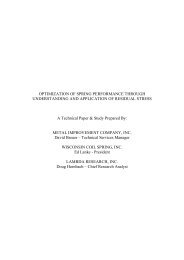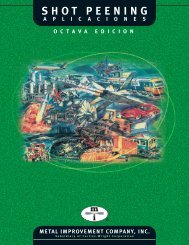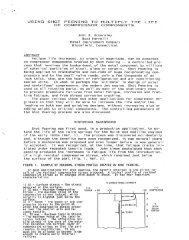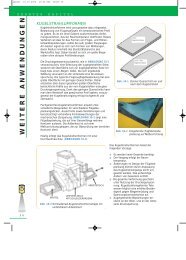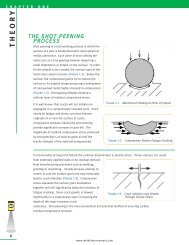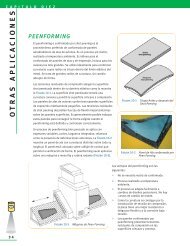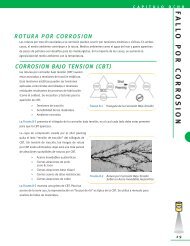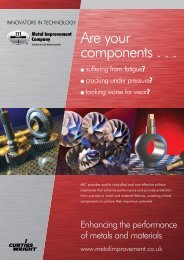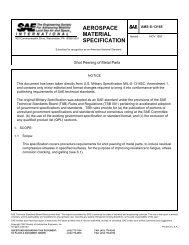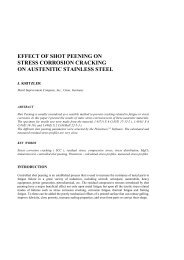MIC Green Book
MIC Green Book
MIC Green Book
You also want an ePaper? Increase the reach of your titles
YUMPU automatically turns print PDFs into web optimized ePapers that Google loves.
C H A P T E R E I G H T<br />
C O RROSIO N FAILURE<br />
28<br />
Application Case Study<br />
FABRICATION OF CHE<strong>MIC</strong>AL HANDLING EQUIPMENT<br />
Shot peening has been utilized as a cost savings measure for construction of chemical handling<br />
equipment. In cases where ammonia or chloride based solutions were to be contained, a lower cost<br />
SCC susceptible material was selected with shot peening rather than a more expensive non-susceptible<br />
material. Even with the additional shot peening operation, construction costs were less than using the<br />
more expensive alloy.<br />
The following table demonstrates the effectiveness of shot peening in combating stress corrosion<br />
cracking for the following stainless steel alloys. A load stress equivalent to 70% of the materials yield<br />
strength was applied [Ref 8.2].<br />
Material Peened Test Life<br />
(yes/no) (hours)<br />
316 SS no 11.3<br />
316 SS yes 1000 N.F.<br />
318 SS no 3.3<br />
318 SS yes 1000 N.F.<br />
321 SS no 5.0<br />
321 SS yes 1000 N.F.<br />
N.F. = No Failure<br />
CORROSION FATIGUE<br />
Corrosion fatigue is failure of components in corrosive environments associated with cyclic loading. Fatigue<br />
strength can be reduced by 50% or more when susceptible alloys are used in corrosive environments.<br />
Application Case Study<br />
SULFIDE STRESS CRACKING<br />
Hydrogen sulfide (H2S) is commonly encountered in sour gas wells. Certain metal alloys when exposed to H2S will experience a significant decrease in fatigue strength. The following test results illustrate the response of<br />
precipitation hardened 17-4 stainless steel exposed to H2S with and without shot peening [Ref 8.3].<br />
As Machined and<br />
% of Yield As Machined Shot Peened<br />
Strength (hrs. to fail) (hrs. to fail)<br />
30 29.8 720 N.F.<br />
40 37.9 561<br />
50 15.4 538<br />
60 15.2 219<br />
N.F. = No Failure<br />
Testing Done Per NACE TM-01-77 Test Standard<br />
www.metalimprovement.com



